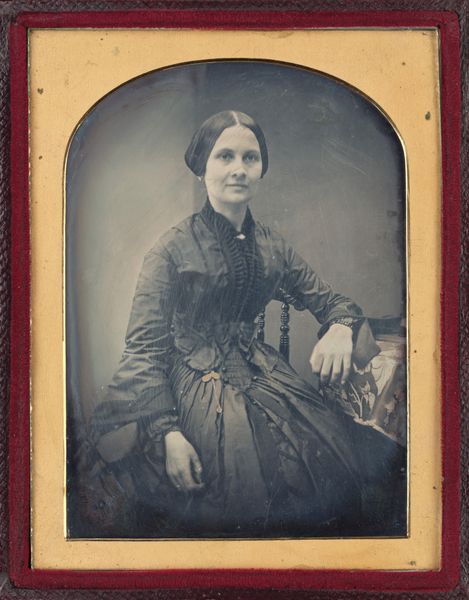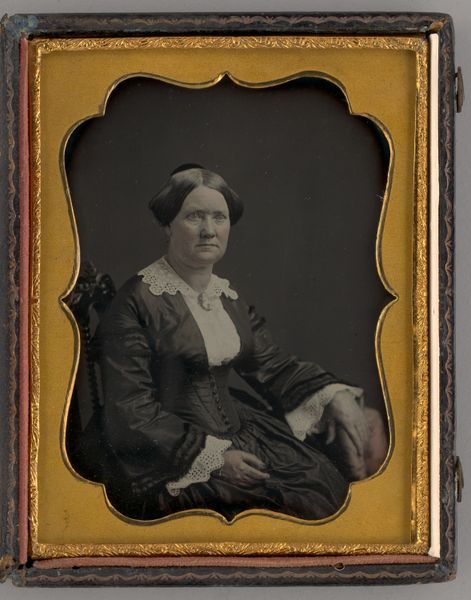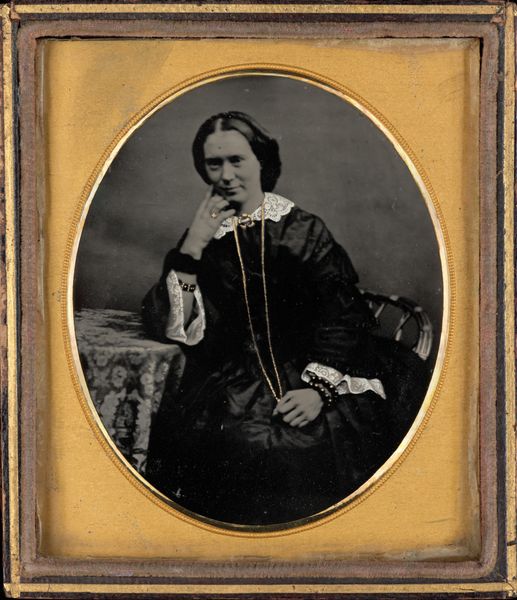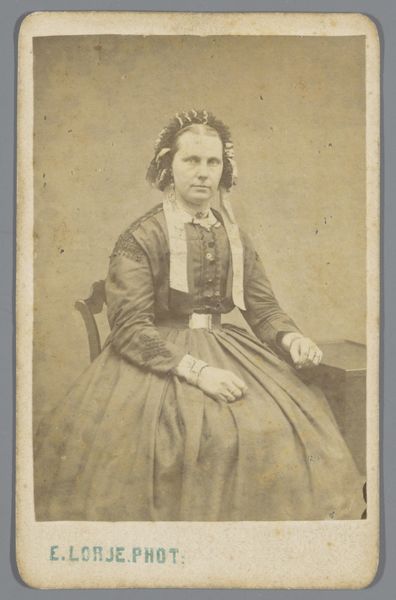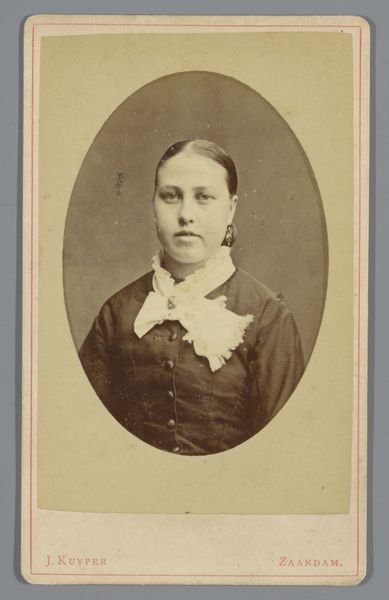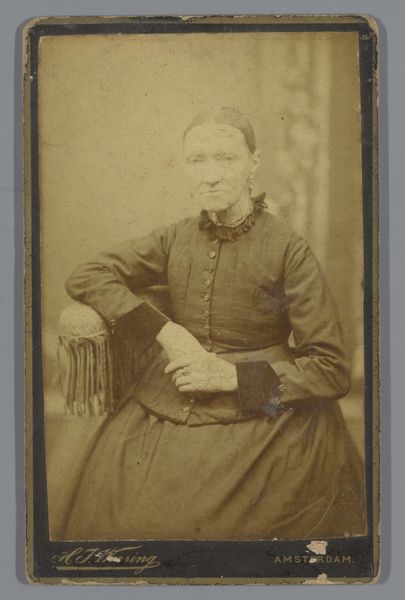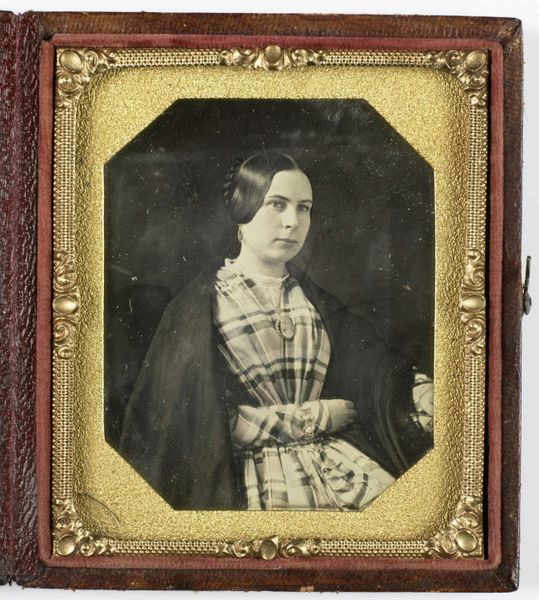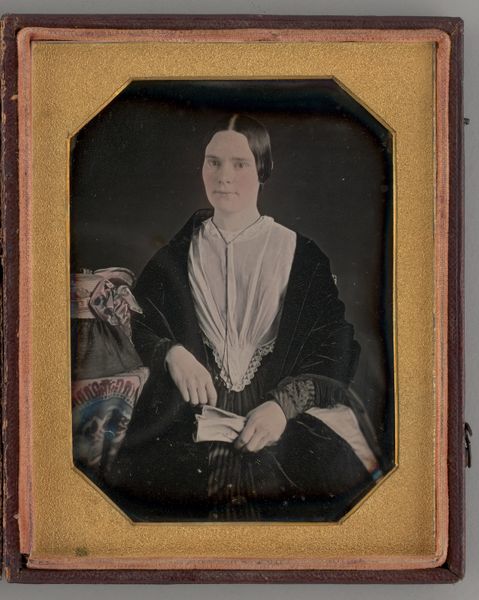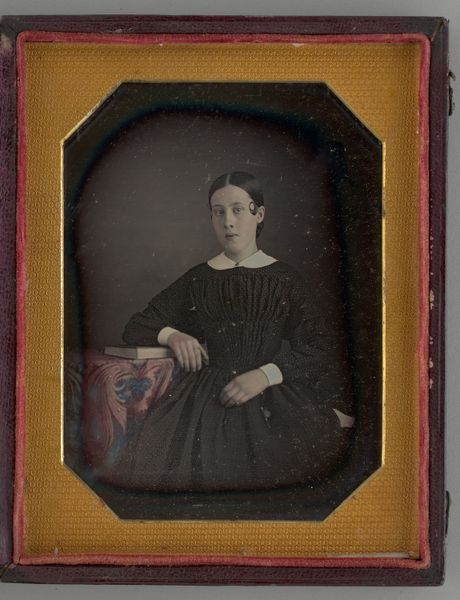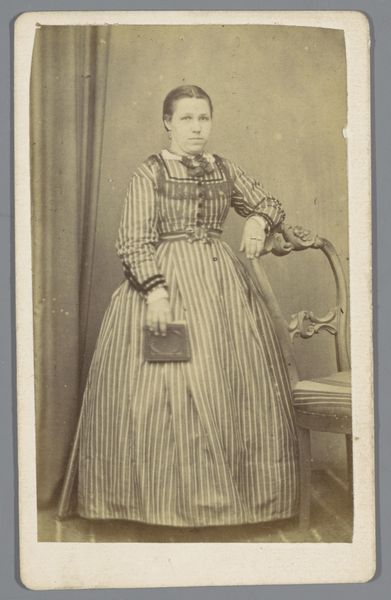
Untitled (Portrait of a Young Woman in a Dark Silk Dress) 1839 - 1860
0:00
0:00
daguerreotype, photography
#
portrait
#
daguerreotype
#
photography
#
romanticism
#
genre-painting
Dimensions: 14 × 11.4 cm (plate); 15.3 × 12 × 1.7 cm (case)
Copyright: Public Domain
Editor: Here we have an anonymous daguerreotype from around the mid-19th century, titled "Untitled (Portrait of a Young Woman in a Dark Silk Dress)". The first thing that strikes me is its quiet intensity – almost haunting. How do you interpret this work? Curator: The haunting quality, I think, stems from several places. Daguerreotypes, as early photographs, offer a directness that painting often lacks. We're looking, supposedly, at an unmediated trace of this woman. What do you notice about her gaze? Editor: She looks directly at the viewer, but there’s also a sense of sadness or resignation in her expression, like she’s seen a lot for such a young age. Curator: Precisely. Now consider the social context. The 1840s and 50s were decades of tremendous social upheaval and debate about the roles of women. Middle and upper-class women were often constrained by expectations of domesticity, piety, and subservience. The dark dress, though silk, suggests a somber restraint. Do you think her expression could reflect some of those constraints, perhaps even a quiet resistance? Editor: That makes me see it differently. Maybe the intensity comes not just from the directness of the photography but from her subtle defiance. I hadn't considered her dress to symbolize restriction, rather than status. Curator: The personal is political, even in portraiture. The simple act of looking directly at the camera, unsmiling, could be interpreted as a quiet assertion of self in a society that sought to define women solely through their relationships to men. It is a powerful statement! Editor: I see the portrait as so much more complex now – a window into the life of a woman navigating a restrictive society, expressing individuality within its confines. Thank you. Curator: Indeed, analyzing it through a gendered lens really enriches our understanding. I learned from you, too. It’s important to remember that our interpretations are always evolving, shaped by our own contemporary contexts.
Comments
No comments
Be the first to comment and join the conversation on the ultimate creative platform.
